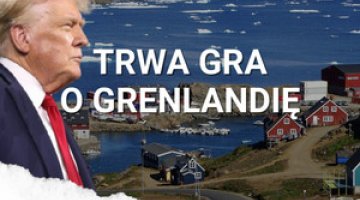Nordic countries: a common vision for the development of defence cooperation
On 30 April, the defence ministers of Denmark, Finland, Iceland, Norway and Sweden signed a document setting out their overall common vision for the development of Nordic defence cooperation up to 2030 under NORDEFCO. Their collaboration within this format of Nordic military cooperation is supposed to be more closely synchronised with NATO’s regional defence planning. The Nordic countries want to achieve this by intensifying their strategic dialogue on situational awareness and escalation management, gaining the ability to command joint and combined operations, cooperating in the areas of hosting allied troops and providing logistical support to these forces, and improving military mobility. In addition, in order to enhance interoperability and secure supply chains, the Nordic countries want to deepen their cooperation on acquiring weapons and defence materials by making joint purchases and strengthening the Nordic industrial base. The declaration stresses that this development will take place in accordance with NATO procedures, the NORDEFCO countries’ operational needs and the EU’s tools & initiatives.
NORDEFCO was established in 2009. Nordic military cooperation was conceived as a partial solution to the problem of the participating countries’ insufficient defence spending, and as a means of increasing efficiency and generating savings in the process of developing the capabilities of their armed forces. At the same time, it was also a cooperation format for the regional countries that shared similar perceptions of security challenges; at that time only Norway, Denmark and Iceland were members of NATO, while Sweden and Finland were still outside the Alliance.
Commentary
- Finland’s and Sweden’s accession to NATO has fundamentally changed the circumstances of Nordic military cooperation. The common vision for NORDEFCO’s development is intended to align the participating countries with cooperation within NATO, and may largely reshape it into a militarily integrated regional pillar of the Alliance. As part of NATO’s defence planning, all the Nordic countries wish to be included in the plan that covers Northern Europe and be assigned to NATO’s Joint Force Command in Norfolk, Virginia, once it is organisationally ready. In September 2023, Norway’s defence minister called on the Supreme Allied Commander Europe (SACEUR) to do so, citing an assessment by the defence chiefs of all the Nordic countries. In the current defence plans, Norway and Denmark are part of the northern theatre of operations (the European part of the Arctic and the North Atlantic) and are assigned to the Norfolk command. Meanwhile, Sweden and Finland are assigned to the plan that covers Europe from the Baltic states to the Alps, and they report to the Allied Joint Force Command in Brunssum (Netherlands).
- All the Nordic countries are now members of NATO; they either spend 2% of their GDP on defence (Finland, Sweden) already or have plans to reach this level this year (Denmark, Norway). Norway, Denmark and Sweden have land forces of comparable size with the same types of weapons: for example, they all use tanks of the Leopard 2 family, infantry fighting vehicles of the CV90 family and Carl Gustaf grenade launchers. Some of these weapons are manufactured on their own territories, mainly in Sweden. Theoretically, implementing their vision of enhanced cooperation in the abovementioned areas should not be a major challenge, especially as in many of these areas they will simply continue their collaboration that has already existed for years. Joint purchases of WMEs (such as infantry fighting vehicles, tanks, personal equipment and airborne weapons) could potentially bring great benefits to all of these countries, as they would achieve economies of scale and thus reduce the costs of both acquiring and maintaining defence materials.
- NORDEFCO’s 15-year track record to date has been mixed. Its undeniable successes include the greater coordination of the Nordic countries’ military exercises and enhanced interoperability, particularly across their air forces, including through joint exercises and the use of shared air bases. They have mainly managed to achieve this by entering into bilateral and trilateral agreements, but their previous cooperation within NORDEFCO has facilitated these processes. At the same time, however, they have failed to make joint purchases of weapons and defence materials, while their efforts to deepen cooperation have often amounted to years of fruitless discussions. The common Nordic uniform is the most visible success of their cooperation within NORDEFCO. During the 15 years of the initiative’s existence, this has been their only joint purchase; its implementation will continue until 2028.


